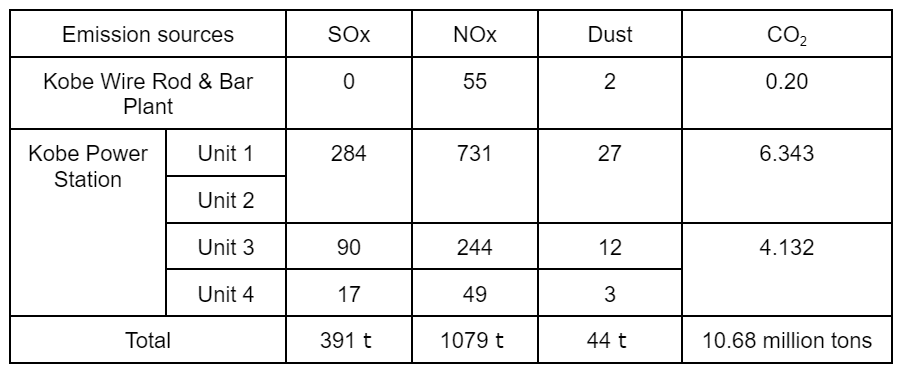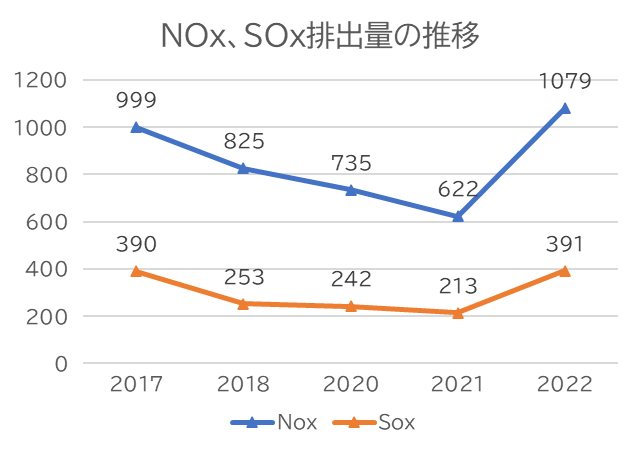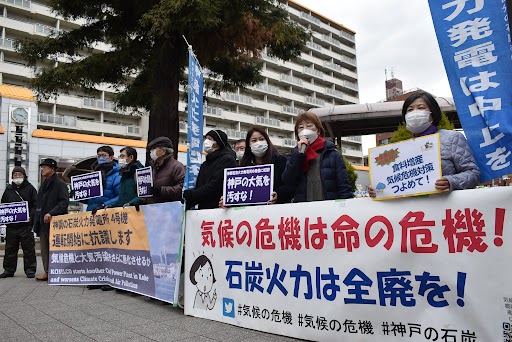February 2023 marked one year since four units of KOBELCO’s coal-fired power plant began operation. In accordance with prefectural and municipal regulations, Kobe Steel, KOBELCO’s parent company, submitted and published its “Report on the results of post-monitoring survey on the Kobe Power Station Units 3 and 4 installation project (FY2022)” to Hyogo Prefecture and Kobe City regarding the environmental impact of the Kobe Power Station Units 3 and 4 installation project. The monitoring period was from April 2022 to March 2023. Additionally, based on the agreement on environmental pollution control signed with Kobe City, an environmental preservation report is submitted and disclosed annually by Kobe Steel. No Coal Kobe, a local citizens group opposing the coal-fired power plant in Kobe, highlighted the level of air pollution and amount of GHG emissions in Kobe City* in its newsletter (published in Japanese). Below, JBC summarizes the environmental impact and problems with Kobe’s coal-fired power plant.
Air pollutants level has further increased with the operation of Units 3 and 4
Kobe Steel has added a coal-fired power plant on the site of a former blast furnace. How has this changed air pollutant emissions? Coal-fired power plants emit not only CO2, but also NOx and SOx, dust and other air pollutants emitted from coal combustion (see Table 1). Previously, Kobe Steel has explained that “environmental impacts on the atmosphere will be reduced” due to the expansion of coal-fired power generation after the retirement of the blast furnaces. However, we can see that although air pollutant emissions decreased once due to the blast furnace shutdown (October 2017), they have increased again with the operation of Units 3 and 4 (Graph 1). Does Kobe Steel think it is acceptable to emit the same amount of air pollutants as when the blast furnaces were operating? There is clearly a gap between Kobe Steel’s explanation that the environmental impact on the atmosphere will be reduced and the reality of the situation.
Table 1. Emissions from Kobe Steel’s Kobe Wire Rod & Bar Plant and Kobe Power Station (coal-fired power plant) (FY2022)


Graph 1. Change in emissions of NOx and SOx
GHG emissions from Kobe coal-fired power plant far exceed those of the Kobe City
Since all four units of the coal-fired Kobe Power Station have begun operating, the plant’s GHG emissions have exceeded 10 million tons of CO2 per year. Compare this to the emissions from Kobe City, which total 7.74 million tons of CO2 per year (indirect emissions), and it becomes clear just how much CO2 is emitted by the power plant. On the other hand, emissions from Kobe City decreased significantly due to the shut down of blast furnaces, decreasing 37.5% between 2013 and 2021. This is due to a national calculation rule in which emissions from blast furnaces were included in the emissions from Kobe City, but not from power plants. Despite the fact that Kobe City (and Hyogo Prefecture) had built additional coal-fired power plants, which are a major source of CO2 emissions and a significant obstacle in the fight against global warming, they could claim significant reductions in emissions simply through a calculation trick. Kobe Steel is planning to start co-firing 20% ammonia with coal in Units 1 and 2, with the goal to eventually reach 100% ammonia firing in all four units by 2050. However, in order to address both air pollution and the impact on climate change, Kobe Steel should consider phasing out coal as soon as possible instead of prolonging it with ammonia co-firing.
It is necessary to continue pursuing the early retirement of the Kobe Power Station.
Please see the No Coal Kobe website for more information on the activities of local citizens.
神戸の石炭火力を考える会 (in Japanese)(Link)
BankTrack: Residents of Kobe City, Japan, are fighting a coal power plant financed by Japanese megabanks – A Frontline Story of resistance to air pollution and climate change in Japan(Link)

